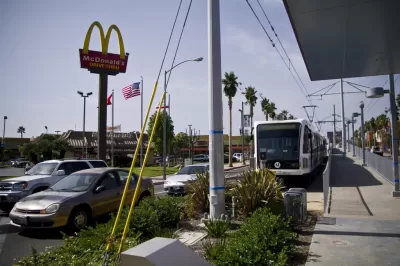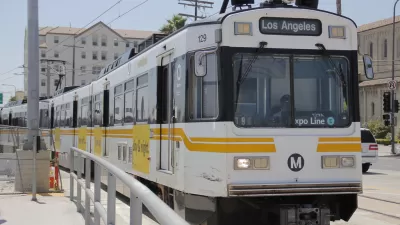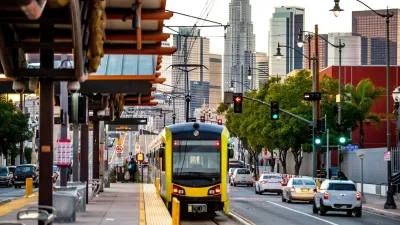Bad news for transit advocates in Los Angeles this week, as the Los Angeles Time reported data that makes the region's transit investments look like something less than money well spent.

Los Angeles, lauded for its sweeping investment in rail transit around the city and surrounding county, hasn’t yet adopted transit in a way that reflects that investment.
"For almost a decade, transit ridership has declined across Southern California despite enormous and costly efforts by top transportation officials to entice people out of their cars and onto buses and trains," report Laura J. Nelson and Dan Weikel.
After that lede, the reports follow with more specifics:
The Los Angeles County Metropolitan Transportation Authority, the region's largest carrier, lost more than 10% of its boardings from 2006 to 2015, a decline that appears to be accelerating. Despite a $9-billion investment in new light rail and subway lines, Metro now has fewer boardings than it did three decades ago, when buses were the county's only transit option.
The article notes that trend also holds true for nearby regional transportation agencies, such as the Orange Country Transportation Agency, as well.
The article includes some speculation about why more people aren’t adopting transit and details the complicated history of transit politics in Southern California, but it also reaches a disappointing conclusion: "The decline suggests that Southern California policymakers are falling short of one of their longtime goals: drawing drivers out of their cars and onto public transportation to reduce traffic congestion, greenhouse gases and the region's reliance on fossil fuels."
With several projects still under construction, including a light rail extension to Santa Monica, and a bus system targeted for an overhaul, the transit future of Los Angeles is still very much to be determined. For those looking for some reason to doubt the implications of the L.A. Times' coverage of the data, Ethan Elkind has already written a response, which calls out the newspaper for misleading use of statistics and selective comparisons in making the decline in ridership look worse than it is.
FULL STORY: Billions spent, but fewer people are using public transportation in Southern California

Planetizen Federal Action Tracker
A weekly monitor of how Trump’s orders and actions are impacting planners and planning in America.

San Francisco's School District Spent $105M To Build Affordable Housing for Teachers — And That's Just the Beginning
SFUSD joins a growing list of school districts using their land holdings to address housing affordability challenges faced by their own employees.

The Tiny, Adorable $7,000 Car Turning Japan Onto EVs
The single seat Mibot charges from a regular plug as quickly as an iPad, and is about half the price of an average EV.

As Trump Phases Out FEMA, Is It Time to Flee the Floodplains?
With less federal funding available for disaster relief efforts, the need to relocate at-risk communities is more urgent than ever.

With Protected Lanes, 460% More People Commute by Bike
For those needing more ammo, more data proving what we already knew is here.

In More Metros Than You’d Think, Suburbs are Now More Expensive Than the City
If you're moving to the burbs to save on square footage, data shows you should think again.
Urban Design for Planners 1: Software Tools
This six-course series explores essential urban design concepts using open source software and equips planners with the tools they need to participate fully in the urban design process.
Planning for Universal Design
Learn the tools for implementing Universal Design in planning regulations.
Smith Gee Studio
City of Charlotte
City of Camden Redevelopment Agency
City of Astoria
Transportation Research & Education Center (TREC) at Portland State University
US High Speed Rail Association
City of Camden Redevelopment Agency
Municipality of Princeton (NJ)





























